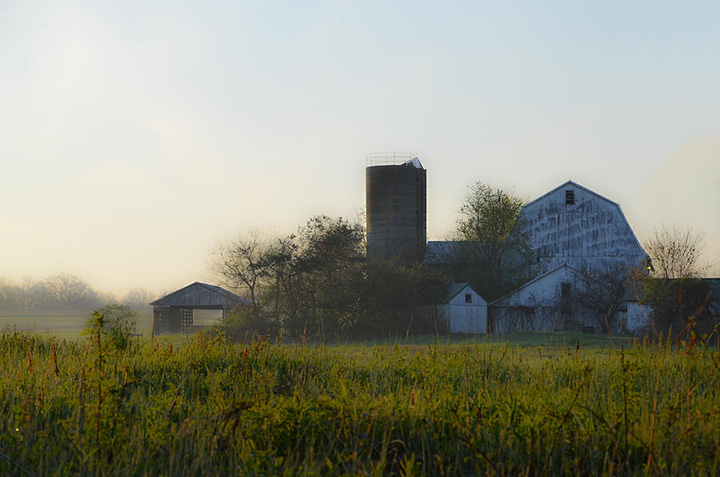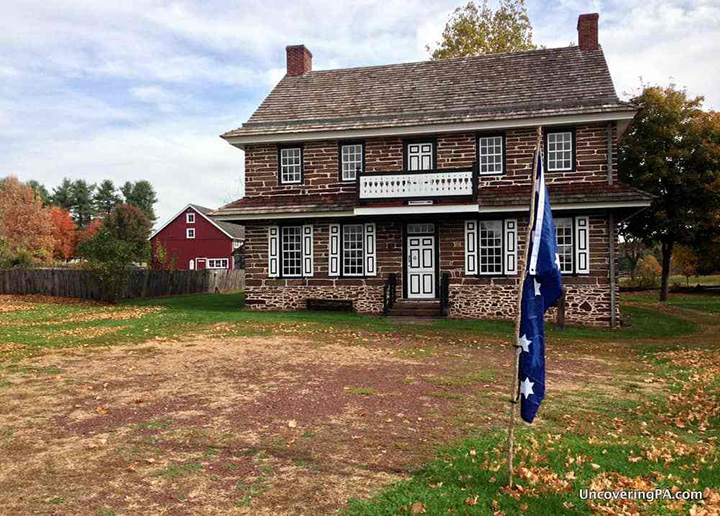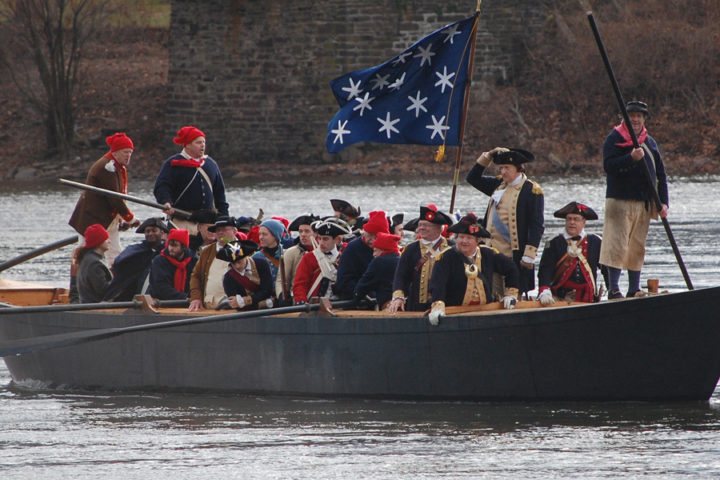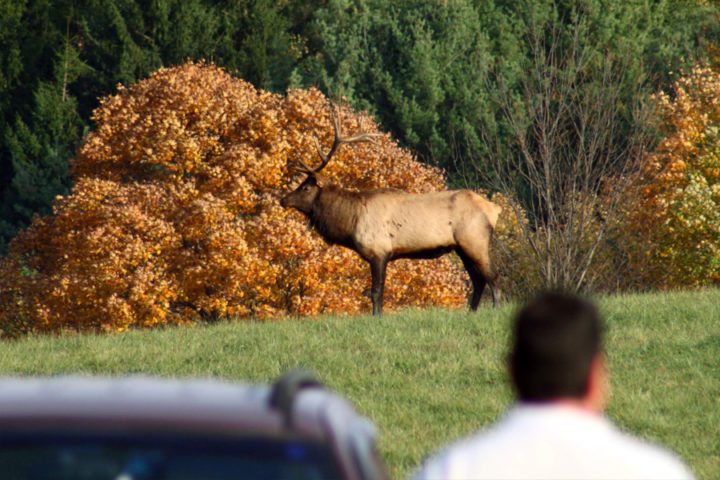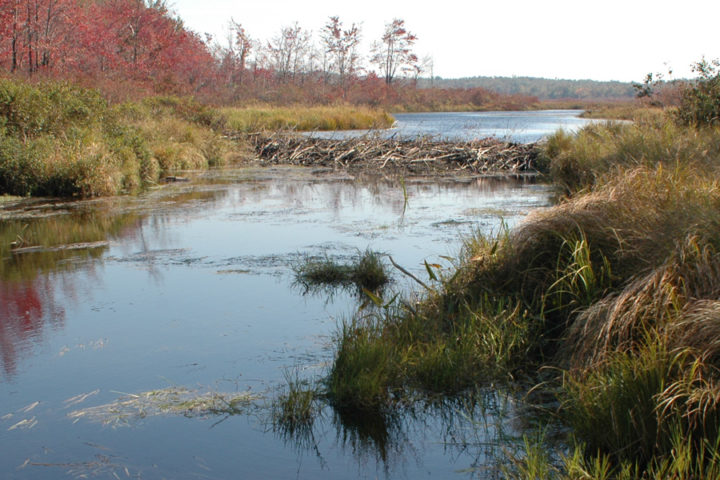Fieldstone buildings grace the rolling farmland of Worcester Township, Montgomery County. Two- hundred year old white stucco farmhouses line winding roads, shaded by towering oaks. Bank barns, historic villages, and wide-open expanses are found here — an oasis in the center of Pennsylvania’s third-most populated county.
And corn still grows on the Gerstemeier farm—it will never be developed, thanks to a partnership between Montgomery County Lands Trust, Worcester Township and Montgomery County.
But protecting the Gerstemeier farm was a challenge. It took the actions of Peter Schlotterer—a community leader and member of Montgomery County Lands Trust—to pull it all together.
A Keystone Parcel
For years Schlotterer had wanted to buy a small strip of land from John Gerstemeier for conservation and for a trail. But Gerstemeier, who worked his farm until his death, wasn’t interested.
Schlotterer recalls their playful bantering: “He would tell me, ‘you can’t afford this farm. It is worth one million dollars.’ He didn’t want to sell any of it.”
The farm is a keystone parcel, touched on all sides by history, agriculture and wildlife habitat. On one side is the Peter Wentz Homestead, an 18th-century farmstead listed on the national historic register. Its 90 acres are preserved as a county historic site.
Merrymead Farms, a working dairy farm and country market dear to local residents, adjoins the land on the other side. The same family has operated Merrymead for more than 100 years.
Another farm and Schlotterer’s own 17 acres, which he painstakingly reforested with native hardwood trees, also border the Gerstemeier property.
Making Deals
Following John Gerstemeier’s death, his estate sought to sell the land for its appraised value of $805,000.
Dozens of houses built on the desirable flat parcel would have torn the community fabric of rural Worcester. Worcester Township moved to protect the farm from development using funding available through Montgomery County’s Open Space Program. Land Specialist Ross Pilling, representing Worcester Township, with Jake Lea of Montgomery County Lands Trust, crafted a preservation plan. They negotiated an agreement with the estate that would secure the estate’s asking price and preserve the farm.
Under the agreement, the township was to purchase a conservation easement* that would forever restrict development on the farm. The development restrictions would reduce the value of the property by $512,000, leaving the land with a fair market value of $293,000. The township would raise the $512,000 for the conservation easement purchase and find a conservation buyer willing to pay $293,000 for the development-restricted land.
The estate would get its full fair value of $805,000; Worcester Township would preserve another 30 acres of open space; and the buyer of the restricted land could purchase good farmland at a reasonable price. Everyone was happy.
Unfortunately, bliss was fleeting. The identified conservation buyer decided to back out soon after the agreement between the township and the Gerstemeiers was reached.
A year later, the Gerstemeier heirs were frustrated. As the agreement neared expiration, they prepared to sell the land for development.
That’s when Peter Schlotterer stepped in — with his heart and checkbook.
“I knew it would be developed and that bothered me,” Schlotterer said. “So I decided to buy it.”
Schlotterer really didn’t want, nor could he afford the entire farm. But on April 10, 2002, after lengthy discussions with Montgomery County Lands Trust on the responsibilities of being a conservation buyer, he placed a large deposit on the property and signed a sales agreement. Schlotterer, at considerable financial risk to himself, bought more time for the land trust and township to find another conservation buyer.
“It was pretty hard times back then,” Schlotterer said, laughing. “I’m so glad another party decided to buy it.”
Med-O-View, Inc., a local farming business looking for reasonably priced agricultural land, stepped in as purchaser in August 2002, relieving Schlotterer of the legal responsibility. The farm would be owned once again by a farm family.
Increasing the Yield
A block of protected land was forming in Worcester. The Gerstemeier parcel added 30 acres to 90 acres already conserved as part of the Peter Wentz Farmstead historic site.
Another parcel adjoining Gerstemeier, the Scarlett Farm, entered into the County Farmland Preservation Program shortly after the sale. Yet another 17 acres was gained when Schlotterer donated a conservation easement on his own property to Montgomery County Lands Trust.
In recognition of Peter Schlotterer’s intrepid and generous leadership, a handsome plaque is set in stone on the Gerstemeier farm for all to see. Inscribed are these words:
This 30.55 acres of permanently preserved open space has been in part made possible through a contribution to the Montgomery County Lands Trust from Peter G. Schlotterer, reflecting his love of this land.
Stewardship: Long-Term Care for the Land
In addition to his timely down payment on the Gerstemeier farm and his conservation easement donation, Schlotterer gave a generous gift to Montgomery County Lands Trust to be used for watching over both properties.
Future owners of properties subject to conservation easements — even though they benefit from purchasing the restricted land at a discount price — may not be as respectful of the conservation limitations as their predecessor who placed the restrictions on the land. Consequently, “holders” of conservation easements such as Montgomery County Lands Trust must regularly inspect properties to ensure that agreed-to conservation terms are followed. And if a violation is discovered, the holder needs to be prepared to enforce the restrictions.
Outreach and education to landowners often go hand-in-hand with these ongoing monitoring and enforcement responsibilities, the goal being to maintain partnerships with landowners in support of conservation. The costs of monitoring, enforcement and education add up over time. Consequently, land trusts usually seek “stewardship” contributions to cover the long-term costs of watching over restricted properties. The stewardship contributions are invested and the investment income is used to cover the monitoring and other stewardship expenses incurred by the land trust each year.


